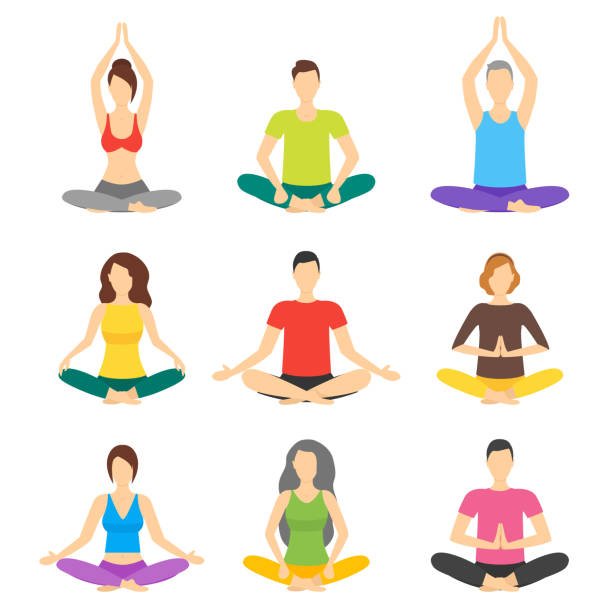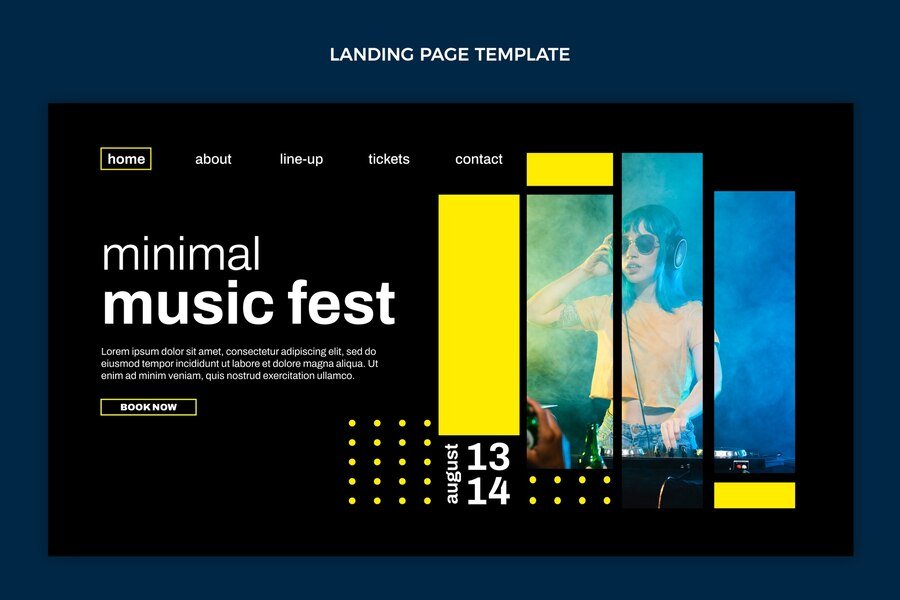Introduction
Color plays a crucial role in web design, particularly for yoga websites, where it can significantly impact user experience, brand identity, and engagement. The strategic use of color can evoke emotions, convey messages, and create a serene and inviting environment that aligns with the principles of yoga. In this article, we explore how yoga website color scheme should use the yoga and exercise of color to enhance their design, attract visitors, and retain students.
Understanding Color Psychology in Yoga Website Design
Color psychology is the study of how colors affect human behavior and emotions. For yoga websites, understanding this psychology can help create a visually appealing and emotionally supportive environment that resonates with visitors.
1. The Calming Effect of Cool Colors
Cool colors such as blue, green, and purple are known for their calming and soothing effects. These colors are ideal for yoga websites as they can create a sense of tranquility and relaxation, which is central to yoga practice.
Key Considerations:
- Blue: Symbolizes trust, peace, and serenity. It can be used in backgrounds, headers, or accents to instill a sense of calm.
- Green: Represents nature, health, and balance. Incorporating green can evoke the natural world, promoting a connection to the environment and holistic health.
- Purple: Associated with spirituality and mindfulness. It can be used to highlight sections related to meditation and deep relaxation.
2. The Energizing Power of Warm Colors
Warm colors such as red, orange, and yellow are stimulating and can evoke energy and enthusiasm. While these colors should be used sparingly, they can effectively draw attention to important elements.
Key Considerations:
- Red: Conveys passion and energy. Use red for call-to-action buttons or to highlight special events and promotions.
- Orange: Represents creativity and vitality. It can be used in icons, buttons, or to accentuate vibrant content.
- Yellow: Symbolizes optimism and happiness. Use yellow to draw attention to key information or to add a touch of brightness.
3. The Balancing Act of Neutral Colors
Neutral colors such as white, gray, and beige provide a balanced backdrop that can make other colors stand out. They are essential for creating a clean, uncluttered design that enhances readability and focus.
Key Considerations:
- White: Represents purity and simplicity. It can be used as a background color to create a sense of openness and space.
- Gray: Conveys sophistication and neutrality. Use gray in text, borders, and backgrounds to balance brighter colors.
- Beige: Offers warmth and comfort. It can be used in backgrounds and sections to create a cozy and inviting atmosphere.
Implementing Color Schemes on Yoga Websites
A well-thought-out color scheme can significantly enhance the aesthetic and functionality of a yoga website color scheme . Here are some strategies for implementing effective color schemes.
1. Monochromatic Color Schemes
A monochromatic color scheme uses different shades, tints, and tones of a single color. This approach creates a cohesive and harmonious look that is easy on the eyes.
Advantages:
- Simplicity: Easy to implement and maintain.
- Cohesion: Provides a unified and polished appearance.
- Flexibility: Allows for subtle variations while maintaining consistency.
2. Complementary Color Schemes
Complementary color schemes use colors that are opposite each other on the color wheel. This approach creates a vibrant and dynamic look that can draw attention to key elements.
Advantages:
- Contrast: High contrast draws attention to important areas.
- Balance: Balances warm and cool tones effectively.
- Visual Interest: Creates an engaging and visually appealing design.
3. Analogous Color Schemes
Analogous color schemes use colors that are next to each other on the color wheel. This approach creates a natural and harmonious look that is pleasing to the eye.
Advantages:
- Harmony: Colors blend well together, creating a unified look.
- Versatility: Suitable for creating both vibrant and subdued designs.
- Ease of Use: Easy to implement and visually appealing.
4. Triadic Color Schemes
Triadic color schemes use three colors that are evenly spaced around the color wheel. This approach creates a balanced and vibrant look that offers high contrast and visual interest.
Advantages:
- Balance: Maintains a balanced use of colors.
- Vibrancy: Creates a lively and dynamic design.
- Distinctiveness: Each color stands out while complementing the others.
Using Color to Enhance User Experience
The strategic use of color can significantly enhance user experience (UX) on a yoga website. Here are some practical tips for using color to improve UX.
1. Highlighting Calls to Action (CTAs)
CTAs are crucial for guiding users towards desired actions, such as signing up for classes or subscribing to a newsletter. Use contrasting colors for CTAs to make them stand out.
Best Practices:
- Contrast: Use colors that contrast with the background to draw attention.
- Consistency: Use the same color for all CTAs to create a cohesive look.
- Placement: Position CTAs prominently on the page for easy access.
2. Enhancing Readability
Readability is essential for ensuring that users can easily consume your content. Use color to create a clear distinction between text and background.
Best Practices:
- Contrast: Ensure sufficient contrast between text and background colors.
- Font Color: Use dark colors for text on light backgrounds and light colors for text on dark backgrounds.
- Highlighting: Use color to highlight important text, such as headings and links.
3. Creating Visual Hierarchy
Visual hierarchy guides users through your content in a logical and intuitive way. Use color to differentiate between different levels of information.
Best Practices:
- Headings: Use a distinct color for headings to separate them from body text.
- Sections: Use background colors to differentiate between sections and content blocks.
- Emphasis: Use color to emphasize important information and guide users’ attention.
Examples of Effective Color Use on Yoga Websites
To illustrate the effective use of color on yoga website color scheme, let’s explore some real-world examples.
Example 1: Serene Yoga Studio
Color Scheme:
- Primary Color: Soft green
- Secondary Color: White
- Accent Color: Light blue
Implementation:
- Homepage: Uses soft green as the background color, creating a calm and inviting atmosphere. White text and light blue accents provide contrast and highlight important information.
- Class Schedule: Uses white backgrounds with green headings and blue highlights for easy readability.
- CTAs: Uses light blue buttons with white text to stand out against the green background.
Example 2: Energetic Yoga Center
Color Scheme:
- Primary Color: Vibrant orange
- Secondary Color: White
- Accent Color: Dark gray
Implementation:
- Homepage: Uses vibrant orange for the header and CTAs, creating an energetic and lively feel. White backgrounds and dark gray text ensure readability.
- Blog: Uses white backgrounds with orange headings and gray text for a clean and modern look.
- CTAs: Uses orange buttons with white text for high visibility and engagement.
Conclusion
The exercise of color in yoga website design is a powerful tool that can enhance user experience, convey the brand message, and create an inviting atmosphere. By understanding color psychology and implementing effective color schemes, yoga websites can attract and retain visitors, ultimately boosting engagement and conversions.













